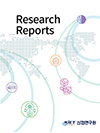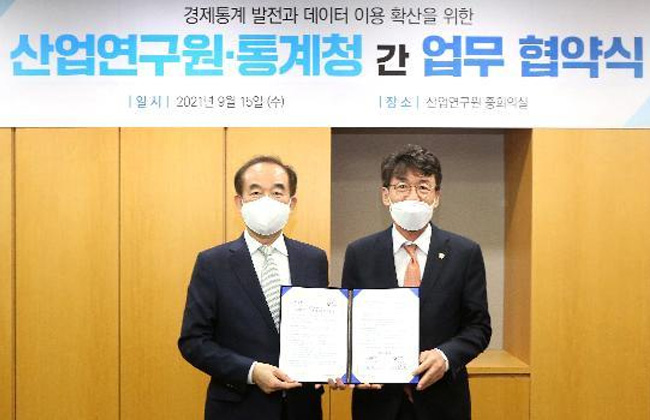Research Reports

Industrialization is crucial for African countries to transform their economies, strengthen their competitiveness and create jobs. Historically, economies characterized by a structural transition to more diverse and productive industries from agricultural activities and resource extraction have been able to increase prosperity. The Zimbabwean government has emphasized its commitment to economic reform, rebalancing the economy and attracting international investment, and has been working to open the economy to domestic and foreign investors since 2019. Its National Development Strategy 1 (NDS1) (2021-2025) and in particular the national pillar “moving the economy up the value chain and structural transformation” is an attempt to support inclusive and sustainable recovery and economic growth agenda. This report also plays an important role in setting an agenda for long-term cooperation between Korea and Zimbabwe. It focuses on comparing and analyzing the economic development paths taken by the two countries, identifying the patterns of structural change for inclusive and sustainable industrial development in both countries, and exploring potential areas of cooperation.
This report is the result of a joint study by the Korea Institute of Industrial Economics and Trade (KIET) and the United Nations Industrial Development Organization (UNIDO), based on the experience of economic development in Korea and Zimbabwe. This collaboration originated from an existing foundation for cooperation established by the signing a memorandum of understanding (MOU) on academic information exchange, joint research and seminars, and research personnel exchange between two organizations in 2015.
The report first outlines the main concept and importance of inclusive and sustainable industrial development (ISID), which has been identified as an effective goal that developed as well as developing countries should ultimately strive toward. The concept of ISID is structured into four main fields of activity: (i) creating shared prosperity, (ii) enhancing economic competitiveness, (iii) safeguarding the environment, and (iv) strengthening knowledge and institutions.
Based on the concept of ISID, this report begins by laying out the overall historical trends and challenges of industrial development, including macro-economic development and performance, industrial structure, and other major issues that have faced Zimbabwe since 1970. While Zimbabwe had inherited a relatively diversified economy in the 1970s, from the 1980s and 1990s up to the post-2000 period, the country’s institutions did not succeed in implementing an industrial development strategy to strengthen and promote structural transformation. In the post-2000 period, Zimbabwe also faced structural and infrastructural bottlenecks, such as a high debt overhang, a liquidity crunch, erratic power and water supply shortages, outdated industrial machinery, a high cost of capital, and widespread company closures. This resulted in the country experiencing persistent de-industrialization and an informalization of its economy, subsequently making the country uncompetitive both in the regional and global markets.
By 1975 Zimbabwe’s manufacturing sector was the single most important sector, accounting for over 24 percent of GDP, compared to 17 percent for agriculture. Thereafter, the manufacturing sector as apercentage of GDP declined from an average of 20 percent in 1980-1989 down to 8 percent during 2010-2019. The spike in the volume index of the manufacturing sector — which had risen by 15 percent in 1980, and by 10 percent in 1981 — came to a permanent end due to inconsistent economic policy in latter decades. Since the post-2000 period, Zimbabwe’s industrial and economic sectors have collapsed due to governance, political and financial issues, including disputed electoral and land redistribution processes, external debt overhang and Western sanctions. Subsequently, Zimbabwe has had to rely heavily on agriculture and resource exports, as the country’s level of manufacturing development declined. Overtime Zimbabwe’s economy was also hit hard by the collapse of agriculture exports, which was a major source of foreign currency. In addition to international isolation, unprecedented hyper-inflation, collapse of local currency and a lack of foreign currency due to political instability, the economy has since the turn of the century stalled any meaningful economic recovery and growth in its development outcome.
In its assessment of Korea’s industrialization process, this report focuses on the trends and current status of industrialization in Korea, Korea’s industrial leap, experience in the middle class trap (1970-2000), and other challenges for Korea’s industrialization. Since the first economic development plan was established in 1962, Korea has transformed from an agricultural, subsistence economy to an industrialized powerhouse, despite an excessive expenditure on defense and a lack of natural resources. During the economic takeoff (1960-1995), the Korean economy grew at an annual rate of about nine percent; exports grew from 54.8 million USD to 125 billion USD; imports grew from 421.8 million USD to 135 billion USD. Unemployment fell from eight percent to three percent during this same period. Korea’s economic development is characterized by export-oriented industrialization and human resourcebased development with government playing a pivotal leadership role. In addition, Korea’s rapid economic growth can be attributed to the improvement of total factor productivity achieved by building private sector capacity and the implementation of effective industrial policies, as well as non-economic factors such as a cultural emphasis on education, and social and political stability. The export-oriented development strategy was the core of Korea’s economic success. This strategy helped to build up the country’s heavy and chemical industries, including the steel, nonferrous metals, machinery, shipbuilding, electronics, and chemical engineering sectors.
Finally, this report proposes suggestions for Zimbabwean industrial policy and action in the pursuit of ISID, taking into account lessons learned from comparative studies on the process of industrial development in Korea and Zimbabwe. Furthermore, the report identifies promising areas for future cooperation between Korea and Zimbabwe.
As for the recommendations for ISID, the authors see land reform as a prerequisite for Zimbabwe to begin on the path of genuine industrialization. The central role of government’s leadership in strategy and policy making and provision of enablers cannot be underestimated for achieving ISID outcomes. A consistent and long-term development strategy and its coherent implementation and strengthened capacity in the private sector are also critical in order to accumulate domestic industrial capabilities. Growth take-off and acceleration should be sustained for long enough time to achieve a meaningful level of growth. Moreover, participation in GVCs and a more open economic policy will serve as a channel for increased participation in global markets. Zimbabwe should work to accumulate capital by incorporating itself into the international division of labor and the global value chain through exports, securing sufficient reserves foreign currency to propel its ISID strategy forward.
If Zimbabwe stabilizes politically and improves conditions for foreign investment, cooperation between Korea and Zimbabwe is poised to deepen, especially in the steel, mining, agriculture, vocational education and green industry sectors. Strengthening cooperation between Korea and Zimbabwe will support Zimbabwe’s future development and enhance the country’s economic growth in the spirit of ISID by helping to share development experience, technology, know-how and other capabilities.

The works on this page are licensed for fair use under the provisions of the Korea Open Government License. See kogl.or.kr for more information.
Please enter the security text below
to prevent email collection
Please check the information of the person in charge.
연구과제 제안이 접수되었습니다.
신청이 접수되었습니다.


View Summary
코로나19 발생 이후 대부분의 고용 관심사가 항공 및 여행서비스, 음식·숙박 서비스 등 주로 서비스 업종에 집중된 상황에서 본 연구는 최근 그 중요성이 강조되고 있는 제조업의 고용변화를 살펴보았다. 분석에 따르면, 코로나19 이후 제조업 고용은 비교적 큰 충격 없이 빠르게 회복하는 모습을 보이고 있다. 제조업 고용은 서비스업에 비해 큰 충격 없이 유지되고 있고, 코로나19 직후 2020년 상반기에 약간 하락하였지만 하반기부터 회복 추세를 보이고 있으며, OECD 주요국의 제조업과 비교하여도 일본과 함께 고용 충격이 비교적 작게 나타나고 있다. 그러나 전반적으로 양호한 고용 성적에도 불구하고 제조업 내 특성 별로는 차이가 나타나는 것으로 보인다. 종사상 지위 별로 보면, 임시·일용직, 고용원이 있는 자영업자에서 고용 충격이 상대적으로 크게 나타났고, 상용직과 고용원이 없는 자영업자는 큰 충격이 없는 것으로 나타났다. 제조업 규모별로는 300인 이상의 경우 코로나 발생 초기 약간의 충격 이후 고용이 빠르게 반등하면서 코로나 이전보다 고용이 더 증가한 반면, 이보다 작은 규모의 제조업체들의 경우 고용 회복이 더디게 나타나고 있다. 고용의 중장기, 단기 추세선을 비교한 결과 제조업 업종에 따른 차이를 보였다. 코로나 발생 이전 3년간의 추세선을 2020년 1월부터 연장한 선과, 2020년 1월부터의 실제 자료를 이용한 단기 추세선을 비교한 결과, 의약품은 코로나19 발생 이전부터 시작하여 코로나19 발생 이후에도 견조한 증가세를 유지하고 있으며, 전자부품·컴퓨터, 기타운송장비, 가구는 코로나19 이후 오히려 고용 추세가 개선되었다. 그러나 다수 업종은 코로나 발생 이후 고용이 하락하였는데, 특히, 비금속광물, 1차금속, 금속가공 분야나 인쇄·기록매체 업종에서 하락이 상대적으로 크게 나타났다.
The following information is provided.
inform@kiet.re.krPlease complete the CAPTCHA below.
[전지적키에트시점] (Eng sub)심상치 않은
국내 대기업 움직임??
KIET 시점에서 보는 미래 로봇 산업 전망은
어떨까요?
경제전문가가 알려드립니다!
(산업연구원 박상수 실장)


